CHECK OUT OUR MEDIA MENTION IN NUTRITION INDUSTRY EXECUTIVE
1-April-2024
By: James Gormley
The panel:
Hannah Ackermann, RD, Director of Marketing & Communications, COMET, London, ON, Canada and Schaumberg, IL, https://comet-bio.com
Denis Alimonti, Director of U.S. Nutrition, Maypro, Purchase, NY, www.maypro.com
Jordi Riera, Chief Business Development Officer, Kaneka Probiotics, Pasadena, TX and Newark, CA, www.floradapt.com and https://kanekaprobiotics.com
Hariom Yadav, PhD, Director, University of South Florida Center for Microbiome Research, Institute on Microbiomes, Tampa, FL, https://health.usf.edu and https://postbioticsinc.com
Manufacturers and formulators are aware that there is a bi-directional relationship between the brain and the gut, critically involving the vagus nerve, connecting the 100 billion neurons in the brain with the 500 million neurons in the gut.
An increasing range of gut-brain-axis-supportive ingredients is emerging, so we at Nutrition Industry Executive (NIE) invited a topline panel of industry experts and scientists for their insights.
NIE: Why is the gut-brain axis important?
Ackermann: We all have trillions of microorganisms living inside our bodies—not only in the stomach but the intestines, throat, mouth, skin, eyes and nasal passages. They outnumber human cells by 10 to one, making up about 1 to 3 percent of the body’s mass (in a 200-pound adult, that’s 2 to 6 pounds of bacteria).
It may be unsettling to ponder how we play “host” to this thriving metropolis of bugs, but these microbiota are vital in maintaining our immune, brain and hormonal well-being. They produce chemicals that influence various bodily functions, including neurotransmitters like serotonin.
Among the fascinating roles of gut microbiota is the gut-brain axis, which is the profound connection between gut bacteria and the nervous system. Most of us have felt this connection when stress or other strong emotions influence digestion.
Microbiome research shows that the GI (gastrointestinal) tract is linked to neurological, emotional and behavioral health via the gut-brain axis.
Yadav: It is becoming more and more clear that the gut-brain axis is essential to healthy aging. The two-way communication system between the gut and brain has a direct linkage to cognitive function, mood, immunity and mitochondrial health/cellular energy.
Riera: The gut-brain axis is an intricate connection between the gastrointestinal tract and the central nervous system (CNS) that plays a critical role in maintaining overall health and well-being. This axis is a bidirectional communication system that facilitates the exchange of signals between the gut microbiome and the brain. The relationship between a nourished gut and the CNS impacts brain functions, emotional behaviors, gut homeostasis and digestion.
Researchers are looking into how the gut-brain axis can impact cognition, memory, depression, anxiety and stress, all major areas of concern that can be negatively affected by modern lifestyle choices. For example, increased exposure to stress can lead to reduced ability to process information, nervousness, anxiety and ultimately lead to mental health disorders. Research has also shown that certain neurological disorders may be associated with disruptions to the gut brain axis. In summary, the gut-brain axis is crucial for maintaining gut and brain health, regulating physiological processes and influencing emotional well-being. Imbalance of the gut-brain axis can impact o gastrointestinal and neurological health.
NIE: Give an example of science-backed proprietary ingredients that support both gut health and the brain.
Alimonti: We are watching the biotics family closely for clinical evidence of benefit to the gut-brain axis. Maypro has just launched a new prebiotic to the U.S. market. EubioQuercetin, a highly absorbable formulation of quercetin, is 6,500 more water soluble than conventional, commercially available quercetin. Because EubioQuercetin naturally features the prebiotic, rutinose, it gives this unique form of quercetin a dynamic and measurable impact on the gut-brain axis.
Two probiotics that have clinical evidence of mood support are the Human Residential Bifidobacteria species B. infantis M-63 and a lactocaseibacillus strain Nutiani HN001. Nutiani HN001, which is manufactured using a proprietary method that increases stability and helps retain viability, supports a range of benefit claims in immunity, women’s health, mood support and more.
A recent clinical trial of the postbiotic LAC-Shield followed 241 participants for 12 weeks in the winter season. While the researchers found that LAC-Shield significantly reduced the incidence, duration, and severity of symptoms during the cold season, they also found that it helped subjects maintain a positive mood state, even under stressful conditions.
Yadav: To safeguard our brain health and cognitive function, it’s crucial to address gut health. Fortunately, scientific advancements have identified various nutritional ingredients that support the gut-brain axis, including omega-3 fatty acids, postbiotics, probiotics, fibers/prebiotics and polyphenols.
For example, PoZibio, a groundbreaking, patent-protected formula of heat-inactivated Lactobacillus paracasei, has been shown to reduce gut permeability and inflammation, thus lowering the risk of cognitive decline and supporting a healthy gut as we age.
Excitingly, innovative studies like Better-Brains-4-All, funded by Innovate UK, supported by the U.K. Government, are exploring the clinical benefits of products like Cerbella and PoZibio in improving both brain and gut health. These products, enriched with essential nutrients and bioactive compounds, hold promise for enhancing overall well-being.
Riera: Kaneka Probiotics’ Lactobacillus plantarum DR7 is our clinically researched and patented strain that exhibits notable benefits on the gut-brain axis. The results of a randomized, double-blind, placebo-controlled clinical trial found that our DR7 supports a healthy stress response.
Kaneka Probiotics’ L. plantarum DR7 has been tested both in vitro and in vivo. Preliminary data suggest DR7 may have an effect on certain brain neurotransmitters. Mindbiome Plus is an ideal product for people of all ages, including healthy teenagers, middle-aged and older adults.
Ackermann: Creating an optimal environment for good microbiota can enhance mood and behavior. This can be accomplished by supplementing prebiotics and probiotics, complementing a diet rich in whole, high-quality foods. Such practices contribute to the enhancement of gut microbiome health, ultimately benefiting overall well-being.
NIE: Talk about ingredient innovation, tips/ideas for manufacturers to keep in mind when selecting ingredients.
Ackermann: Prebiotics offer a possible solution to support overall digestive and cognitive health by promoting beneficial bacteria growth. Unfortunately, many popular prebiotic fiber options, including inulin, are oligosaccharides, which the popular low-FODMAP (fermentable oligosaccharides, disaccharides, monosaccharides and polyols) diet cautions individuals to avoid due to tolerability concerns.
If consumers consume a prebiotic or high-fiber product with inulin and have a bad digestive experience, it will likely turn them off the product for life. The phenomenon is widespread with sweet or savory items supplemented with inulin. Due to the products’ likeability, consumers will indulge over the recommended serving size suggestion and experience bloating, pain and other negative symptoms.
Fortunately, a new class of premium prebiotics is coming to market with better tolerability to address these concerns. For example, COMET’s Arrabina is an arabinoxylan prebiotic fiber upcycled from wheat crop leftovers. Arabinoxylan is a hemicellulose polysaccharide fiber with clinically proven prebiotic and blood glucose metabolism benefits. The fiber’s longer chain polysaccharide structure makes it better tolerated by the gut than oligosaccharides. Results from a double-blind, randomized clinical trial confirm that consumers can take up to 15 grams per day of Arrabina with no negative gut or bowel reaction.
Alimonti: Over 2,000 years ago, Hippocrates famously declared that “All disease begins in the gut.” When we consider that 70 percent of the immune system is housed in the gut, with wide-ranging implications for conditions related to allergy and inflammation, the gut provides us with a world of possibilities for improving human health. Considering the implications, I can’t stress enough the importance of using ingredients with the human clinical studies to support their claims.
Yadav: Postbiotics like PoZibio are dead strains of good bacteria, and as such, can be used in multiple delivery systems, including powders for liquid beverages, capsules and even cooked foods. Due to its small daily dose (50-100 mg) and neutral taste, it can be added to gummies, the fastest growing delivery format. Live strains of probiotics would be very problematic. Higher doses of the postbiotic will be launched as medical foods, for the treatment of IBD/IBS (inflammatory bowel disease/irritable bowel syndrome), as well as to assist the gut lining which can be compromised by chemotherapy and radiation.
NIE: What about prebiotics, postbiotics and synbiotics? Where do they fit in here?
Alimonti: We know the human gut microbiome is a dynamic and intricate community of trillions of microorganisms residing in the gastrointestinal tract—an ecosystem that plays a crucial role in digestion, nutrient absorption and immunity.
Prebiotics are a source of food for your gut’s good bacteria. They are sugars carbs people can’t digest, so they travel to the lower digestive tract, where they help healthy bacteria grow.
Postbiotics are bioactive compounds, metabolic byproducts and cell components produced during the fermentation of prebiotic substrates by probiotics or via a heat-sterilization process. Postbiotics are attracting attention for their potential to influence and beneficially modulate various physiological processes. Synbiotics refer to probiotics being combined with prebiotics.
Ackermann: Research indicates that biotics supplementation can be beneficial for easing symptoms for a wide range of cognitive conditions, including IBS, stress, anxiety and depression. Whereas probiotic supplementation directly adds good bacteria to the gut, prebiotics help fuel the growth of good bacteria already in the gut. Prebiotics are short-chain carbohydrates derived from plant fibers. There is not yet as much research on prebiotics’ role in supporting the gut-brain axis, but studies indicate the potential role in managing cognition, anxiety, and depression.
Yadav: Postbiotics Inc. is a company that is dedicated to studying PoZibio. PoZibio will work both as a live probiotic and as a heat-treated postbiotic. That said, the postbiotic is easier to formulate. It can certainly be combined with prebiotics.
Riera: Prebiotics and probiotics have an amazing synergistic effect. Probiotics utilize prebiotics as fuel to feed off of and thrive. Prebiotics support the role of probiotics within the gut-brain axis, hence indirectly support the gut-brain axis.
Postbiotics, the metabolic byproducts produced by probiotics during their fermentation process, are also beneficial. Postbiotics have generally been shown to promote a healthy inflammatory response, which may influence the gut-brain signaling pathways.
At Kaneka Probiotics, we work extensively with clients to develop innovative pre-, pro- and postbiotic formulations for a range of targeted health benefits.
NIE: Gut microbes play an important role in immunity and inflammation; please elaborate on this.
Riera: Research demonstrates that disruption of the microbiome and microbial diversity can negatively impact immune function. Overall, the beneficial effects of gut microbes in reducing oxidative stress and supporting immunity contribute to overall health and well-being.
In addition to the research we have done on the gut-brain axis, our Lactobacillus plantarum DR7 has been clinically studied and shown to benefit immunity. This easy-to-take, natural and safe strain can help support immune function and promote respiratory tract health. We have also found that our DR7 may neutralize oxidative stress and thereby promote a healthy inflammatory response.
NIE: Talk about gut health, probiotics and skin health. What’s the linkage? What product would you point to? What science would you point to?
Riera: The intricate interplay between our gut, which houses trillions of microbes, and our skin, which consists of the systems that regulate the hair, nails, sweat and oil glands, highlights the relationship in maintaining overall health.
Kaneka Probiotics offers Lactobacillus Sakei proBio65, a clinically tested, natural lactic acid bacteria strain isolated from kimchi. Lactobacillus Sakei proBio65 showed significant results in randomized, placebo-controlled trials, indicating benefits for skin health. Best of all, this strain is a postbiotic, meaning it can survive in gastric juices without special encapsulation and can be utilized in many formats, including stick packs. Lactobacillus Sakei proBio65 may also be used topically in cosmetic skin care formulas, such as creams or lotions.
Alimonti: There are several biotics on the market that show evidence of skin health benefits. L-92, a postbiotic, may help improve symptoms of atopic dermatitis. Probiotics B. breve M-16V, a Human Residential bifidobacteria strain, and Nutiani HN001, a lactocaseibacillus strain, have both shown support for not only skin, but a healthy metabolism and weight management.
Ackermann: Research indicates that biotics supplementation can be beneficial for easing symptoms for a wide range of cognitive conditions, including IBS, stress, anxiety and depression. Whereas probiotic supplementation directly adds good bacteria to the gut, prebiotics help fuel the growth of good bacteria already in the gut. Prebiotics are short-chain carbohydrates derived from plant fibers. There is not yet as much research on prebiotics’ role in supporting the gut-brain axis, but studies indicate the potential role in managing cognition, anxiety, and depression.
NIE: What about good bacteria and energy metabolism?
Alimonti: Maypro’s B. breve B-3—a clinically backed; room-temperature-stable strain of Bifidobacterium breve—has been clinically shown to support various aspects of healthy metabolism.
Ackermann: The gut communicates to the brain to influence hunger and eating behavior through subconscious signals and waves of nerve cells. Neurons in the gut, some of which release hormones like PYY and glucagon, become activated in response to the presence of sugar, fatty acids, and amino acids. These nerve cells, known as neuropod cells, collect information about nutrient content and relay it to the brain via the vagus nerve. Particularly sensitive to sugar, neuropod cells trigger brain areas associated with food-seeking behavior.
GLP-1 and ghrelin are examples of gut-brain signaling mechanisms that regulate appetite, adjusting their levels based on dietary intake. Ghrelin levels rise during fasting, stimulating food-seeking behavior by inducing hormones like epinephrine. Conversely, the glucagon-like pathway (GLP-1), produced by neurons in both the gut and brain, inhibits feeding and reduces appetite.
GLP-1 has been in the spotlight recently due to the development of incretin-based therapies for diabetes and weight management, which include the GLP-1 drugs Ozempic, Wegovy and Mounjaro.
The drugs mimic a glucagon-like peptide that regulates appetite in the brain, leaving people feeling satiated for hours.
Love them or hate them, Ozempic and GLP-1 drugs have proven to be a massive success. They have shown that consumers are not only interested in but willing to pay large amounts of discretionary income for products that provide tangible results.
The space is wide open for other biotic foods and drinks to appeal to consumers’ interest in mechanisms other than glucagon-like peptides that regulate appetite in the brain, improve insulin responses and improve satiety—or a feeling of fullness—well after a meal is consumed.
Prebiotic fibers are in an ideal position to leverage this opportunity as they can improve insulin responses and satiety or a feeling of fullness after a meal. When bacteria ferment prebiotic fibers in the large intestine, it leads to the release of not only GLP-1 but also another crucial appetite-decreasing hormone known as PYY (peptide YY). These smaller molecules can independently suppress appetite and are associated with lower body weight and improved glucose regulation. Because the additional release of GLP-1 and PYY takes place hours after a meal, it effectively reduces cravings between meals and diminishes the overall desire to eat during the subsequent meal.
NIE: Gut bacteria that affect the brain, along with mood and stress, are often referred to as “psychobiotics.” Please discuss.
Riera: “Psychobiotics” is a term of art that generally refers to bacteria that, when ingested in adequate amounts, may positively impact mental health. Kaneka Probiotic Lactobacillus plantarum DR7 has been shown to support cognitive health in older adults experiencing stress, and generally improve the stress response.
Our strains are validated and tested in preclinical research and randomized, double-blind, placebo-controlled clinical trials. Our clinical research found that our L. plantarum DR7 strain produced changes in the gut microbiota associated with the expression of enzymes related to the modulation of brain neurotransmitters. We are excited to build on this ground-breaking research.
Yadav: PoZibio Lactobacillus paracasei isolated originally in the neonatal human gut, demonstrated strong support of improved cognitive function, learning and decreased unease in preclinical models, and initial human data is showing an improvement in quality-of-life markers.
NIE: What are your projections as to the growing market for gut-brain-axis-supportive ingredients?
Ackermann: While much is yet to be learned about biotics’ role in our cognitive health, continued emerging research on the functional health benefits of the proper balance of gut bacteria will continue to elevate the category growth, opportunity and demand.
As consumers become increasingly aware of how the army of microbes in their digestive system is connected to physical and mental health, demand for a broader range of biotics with targeted health benefits will continue to grow.
Riera: Awareness of the deep relationship between the gut and brain is increasing, and we are seeing a great demand for gut-brain axis related products. Research is progressing and we are learning more every day about how we can support brain health through our gut. We are continuously performing new research and developing new products and formulations. Kaneka Probiotics is proud to offer clinically researched strains and evidence-based formulations to support wellbeing and health.
Alimonti: All market forecasts indicate the category will continue to grow at a healthy rate. It’s an exciting opportunity for researchers, formulators and ingredient suppliers with human clinical research to make a real impact on human health. NIE






